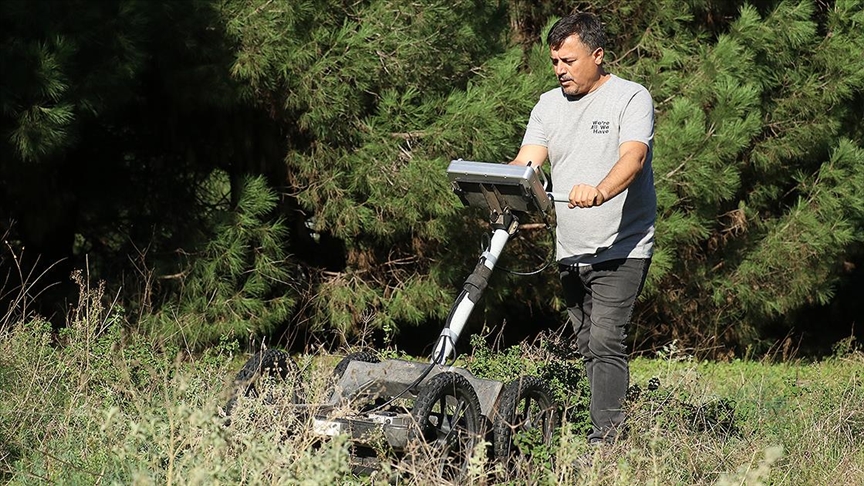
The center of Helenapolis Ancient City will be revealed with ground-penetrating radar
The central part of the ancient city of Helenapolis, which was an important port city in the late 4th century BCE, will be revealed through ground-penetrating radar.
Excavations of the ancient city of Helenapolis, named after the mother of Roman Emperor Constantine the Great, have commenced, including the underwater sections of the city.
The underwater excavations revealing artifacts from the Hellenistic period are being continued in a forested area this year.
Started in 2021 with the permission of the Ministry of Culture and Tourism and under the presidency of Yalova Museum Directorate with the support of Altınova Municipality, the Underwater Excavations of Helenapolis were expanded in 2022 through a presidential decree as the “Hersek Delta Land and Underwater Excavations.”
📣 Our WhatsApp channel is now LIVE! Stay up-to-date with the latest news and updates, just click here to follow us on WhatsApp and never miss a thing!!
Led by Dr. Serkan Gündüz, Head of the Underwater Archaeology Department at Bursa Uludağ University and President of the Hersek Delta Land and Underwater Excavations, ongoing efforts involve the use of ground-penetrating radar to identify the center of the city.
Dr. Serkan Gündüz, stating that Helenapolis was an important port city after the 4th century, said, “We are conducting ground-penetrating radar studies to identify excavation areas. We know that there are findings from previous works in the region. Helenapolis Ancient City is a city attributed to Helena, the mother of Emperor Constantine. It is frequently encountered in historical scenes, especially after the 4th century. In the era of Emperor Justinian, the road between present-day Kadıköy and Gebze was canceled, forcing the postal service to descend directly from Istanbul to Helenapolis Harbor. In the later period, especially in the 11th century, it is an important location for the Crusaders.”
Dr. Gündüz, who stated that they have been excavating the Lighthouse structure located west of the ancient city’s dock for the past two years, said the following to journalists:
“From 2024 onwards, we plan to shift the excavations more towards the center of Helenapolis. Therefore, the work we are doing today is crucial. After detecting possible cultural assets underground in these studies, our excavation areas will be planned accordingly in 2024. Currently, it is the only district in Yalova with a presidential excavation. At the same time, as a result of our correspondence with the Ministry of Culture and Tourism and the conservation board, we will secure and protect all scattered architectural pieces found in Yalova in the garden of our excavation house in Altınova. Thus, we can say that when we look at Altınova, it will become the beating heart of archaeology in Yalova.”
Cover Photo: Sıtkı Yıldız/AA
You may also like
- A 1700-year-old statue of Pan unearthed during the excavations at Polyeuktos in İstanbul
- The granary was found in the ancient city of Sebaste, founded by the first Roman emperor Augustus
- Donalar Kale Kapı Rock Tomb or Donalar Rock Tomb
- Theater emerges as works continue in ancient city of Perinthos
- Urartian King Argishti’s bronze shield revealed the name of an unknown country
- The religious center of Lycia, the ancient city of Letoon
- Who were the Luwians?
- A new study brings a fresh perspective on the Anatolian origin of the Indo-European languages
- Perhaps the oldest thermal treatment center in the world, which has been in continuous use for 2000 years -Basilica Therma Roman Bath or King’s Daughter-
- The largest synagogue of the ancient world, located in the ancient city of Sardis, is being restored











Leave a Reply